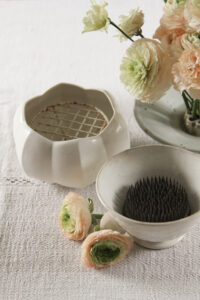Arranging Flowers & Foliage
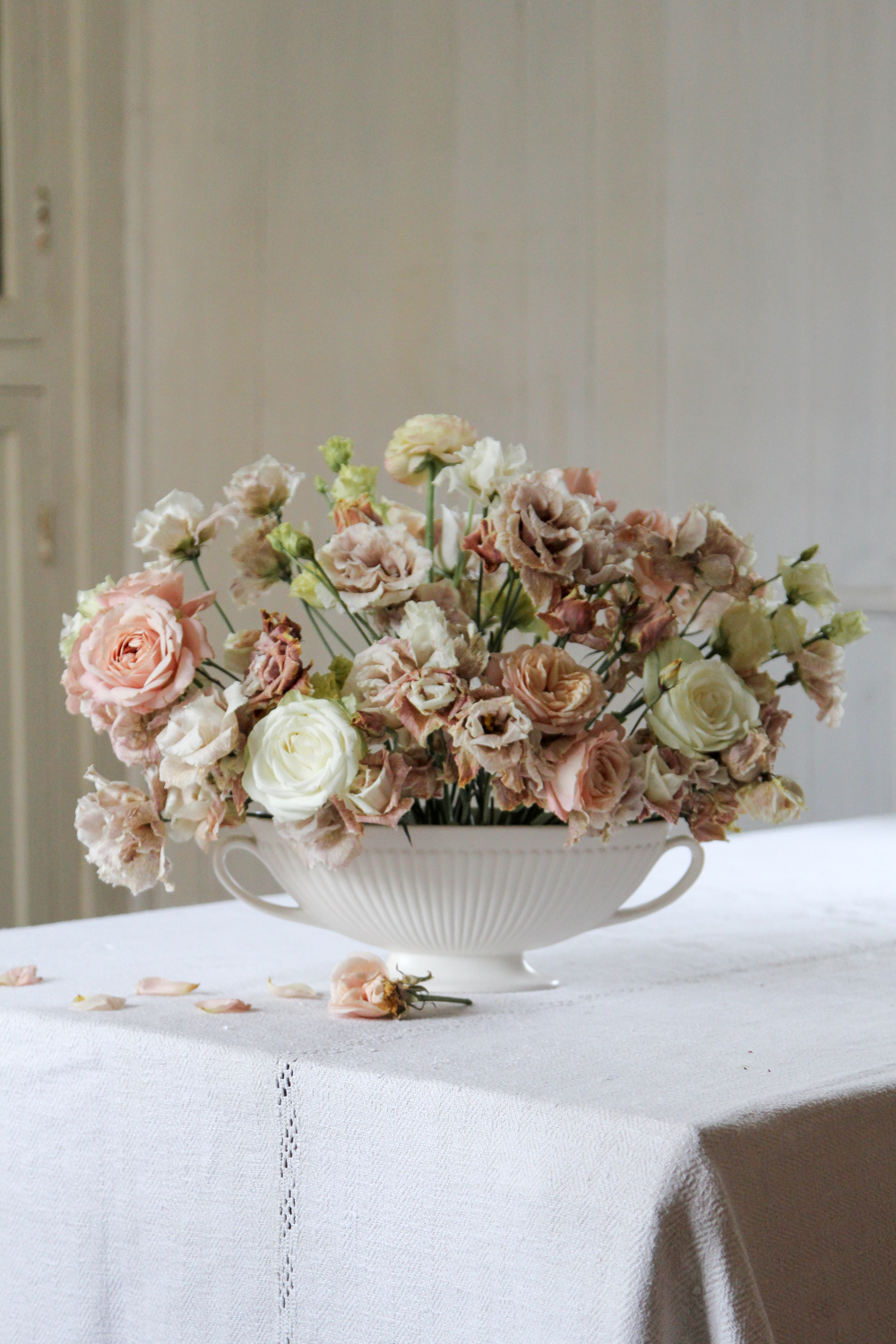
Bringing flowers, foliage and decorative branches into the home enhances the look and feel of our environment and softens the boundaries between inside and out. Whether large or small, fresh or dried, an arrangement infuses spaces with colour, texture, form and fragrance and can be enjoyed across the home. Arrangements need not be complicated to look beautiful, often it is the simplest compositions that can be most transformative and instantly make a space come alive. Find joy and calm in creating, immersing yourself in the beauty of nature and rhythms of the changing seasons.
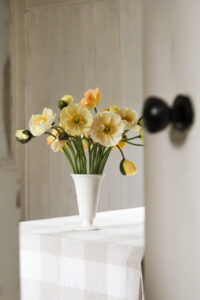
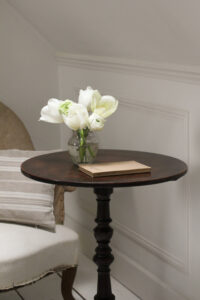
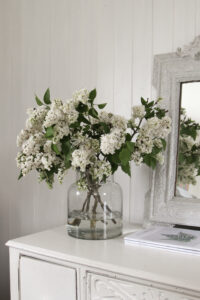
Ideas for arranging flowers & foliage at home:
G a t h e r
There is an abundance in the natural world, from what we grow intentionally to what grows naturally. Flowers and foliage can be gathered from our natural surroundings or sourced from flower markets, florists or stores. Whilst it is lovely to buy flowers if budget allows, there is plenty to forage throughout the seasons. Explore the local area, keep secateurs in your glove box and always observe what is growing along roadsides and in the countryside, being sure never to take too much of any one plant. Wildflowers, grasses, branches and even weeds, there is much to discover!
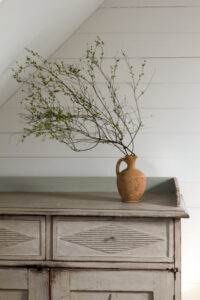
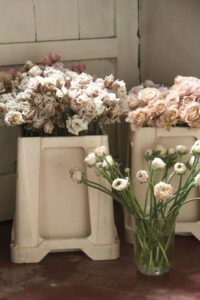
Whilst beautiful arrangements can be created with very little, gradually gathering together a simple floral tool kit such as secateurs, tape, chicken wire and flower frogs alongside a collection of containers can be helpful if you are looking to develop your compositions.
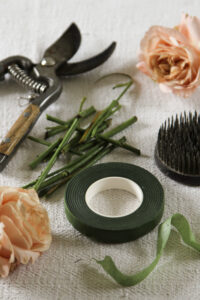
P r e p a r e
After gathering branches and blooms, condition each stem by trimming the ends and removing any leaves or branches that would sit below the water line in your vase. Extra buds and leaves left soaking in the bottom of the vase can start to break down, harbouring bacteria which shortens the life of an arrangement. Cutting stems diagonally increases the surface area of the stem, which helps with water uptake.
Just as nothing in nature is totally linear or symmetrical, trim the ends at different lengths to create a natural flow of colour and texture and avoid compositions being too stiff and arranged. Half fill your container with clean water and change every few days. Using luke warm rather than ice-cold water gives flowers more oxygen and helps to prolong their life.
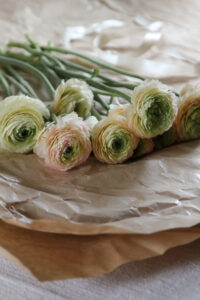
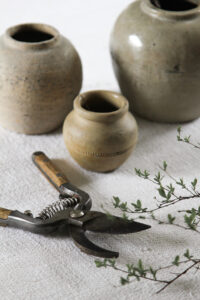
A r r a n g e
The success of an arrangement comes as much from what you choose not to put in. Consider the different varieties of stems that you include and how they will work together. Whilst a mix of florals and foliage can look striking, so too can a single variety or colour palette, which can feel simple and abundant all at once.
It is also important to think about proportion in your arrangement. Allowing for more plant than vessel enables flowers to sit naturally in a vase. Experiment with varying heights and shapes of flowers and greenery to capture the essence of their beauty and achieve your desired composition.
Branches, whether fresh or dried have a wonderful sculptural quality and can form a simple yet impacting arrangement. Choose branches that have natural curves and movement rather than straight, upright stems. In order to highlight interesting shapes, less is always more when it comes to arranging branches, and there is beauty in the quiet moments, in the negative space.
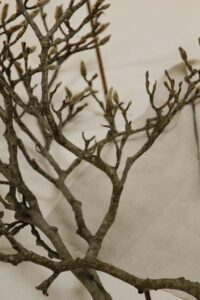
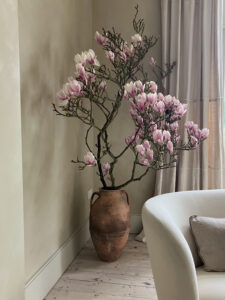
When arranging it is worth considering the vessel as much as the stems, considering scale, style and the final silhouette of your display. Different shaped containers determine how the flowers and foliage will sit within them, whether loose and laid-back or more structured and formal. Your choice of vessel will be dependent on where you intend to place the arrangement within your home. Any container whether a vase, bowl, jug or pot can be turned into something interesting for flowers. Start by looking at what you already have and how things can be adapted for use. If your container isn’t water tight, a jam jar can simply be placed inside to hold the water. Ensure your vases and containers are always clean as bacteria will shorten the life of your flowers.
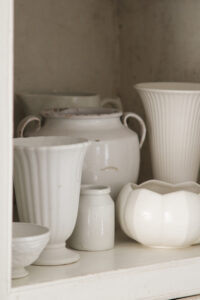
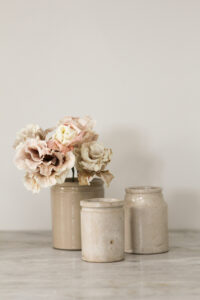
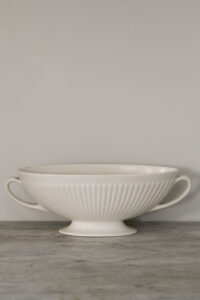
Flower frogs or chicken wire with floral tape can be used to support flowers when using wider vessels. Flower frogs have been used as a functional and sustainable flower arranging tool for centuries, dating back as far as the 14th century. Designed to give floral structures shape and stability, flower frogs sit at the bottom of a bowl or vase and have holes or vertical metal pins in which to insert and secure stems. There are many different styles of flower frogs, varying in size, shape and material to accommodate different flower and foliage types.
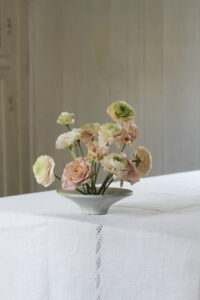
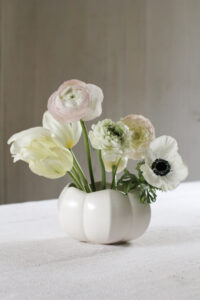
For small arrangements, bud vases can be used to enhance any space with their simple elegance. The joy of bud vases is that they are infinitely flexible and can be placed almost anywhere. With a little thought and consideration, despite their size, bud vases can completely transform a space whether gathered and clustered together or placed individually. They can also be used to display off cuts of buds and smaller flowers that are not needed in larger arrangements.
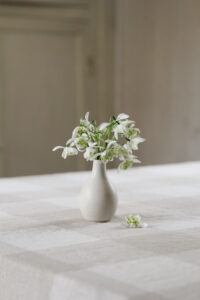
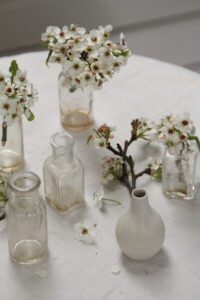
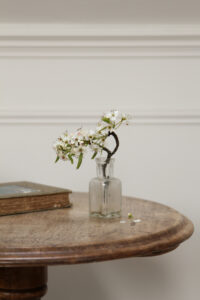
There is an infinite variety and supply of uplifting flowers and foliage that can brighten up the home with scent, texture and colour and create beautiful focal points. Whether a single stem placed in a simple glass vessel, a vase of abundant florals, or sculptural branches from the garden, find beauty in every arrangement.
We hope that this post may encourage you to look to the natural world for inspiration and capture the beauty of nature in your home throughout the year. For further inspiration, visit our journal, or browse our Pinterest gallery. You can also find a curation of beautiful and unique vessels for simple, natural arrangements in our online store.
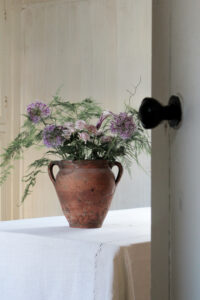
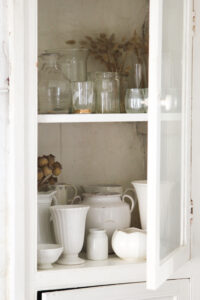
Whenever your are creating beauty around you, you are restoring your own soul.
– Alice Walker –
Share this entry:

